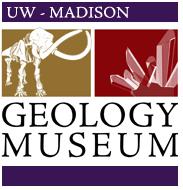
A meteorite is a rock that originated in outer space and has fallen to the surface of a planet or moon. When the original object enters the atmosphere, various factors such as friction, pressure, and chemical interactions with the atmospheric gases cause it to heat up and radiate energy. It then becomes a meteor and forms a fireball, also known as a shooting star; astronomers call the brightest examples "bolides". Once it settles on the larger body's surface, the meteor becomes a meteorite. Meteorites vary greatly in size. For geologists, a bolide is a meteorite large enough to create an impact crater.

Estherville is a city in Emmet County, Iowa, United States. The population was 5,904 in the 2020 census, a decline from 6,656 at the 2000 census. It is the county seat of Emmet County.

Greensburg is a city in, and the county seat of, Kiowa County, Kansas, United States. As of the 2020 United States census, the population of the city was 740. It is home to the world's largest hand-dug well.

Lakeview is a town in Lake County, Oregon, United States. The population was 2,418 at the 2020 census. It is the county seat of Lake County. The city bills itself as the "Tallest Town in Oregon" because of its elevation, 4,757 feet (1,450 m) above sea level. Lakeview is situated in the Goose Lake Valley at the foot of the Warner Mountains and at the edge of Oregon's high desert country. Its economy is based on agriculture, lumber production, and government activities. In addition, tourism is an increasingly important part of the city's economy. Oregon's Outback Scenic Byway passes through Lakeview.

The Egyptian goose is an African member of the Anatidae family including ducks, geese, and swans. Because of their popularity chiefly as an ornamental bird, the species has also been introduced to Europe, the United States and elsewhere outside their natural range. Egyptian geese were regularly represented in ancient Egyptian art.

The Field Museum of Natural History (FMNH), also known as The Field Museum, is a natural history museum in Chicago, Illinois, and is one of the largest such museums in the world. The museum is popular for the size and quality of its educational and scientific programs, and its extensive scientific specimen and artifact collections. The permanent exhibitions, which attract up to 2 million visitors annually, include fossils, current cultures from around the world, and interactive programming demonstrating today's urgent conservation needs. The museum is named in honor of its first major benefactor, Marshall Field, the department-store magnate. The museum and its collections originated from the 1893 World's Columbian Exposition and the artifacts displayed at the fair.

Winchcombe is a market town and civil parish in the Borough of Tewkesbury in the county of Gloucestershire, England, it is 6 miles (10 km) north-east of Cheltenham. The population was recorded as 4,538 in the 2011 census and estimated at 5,347 in 2019. The town is located in the Cotswolds and has many features and buildings dating back to medieval times. In 2021 it was the primary strike site of the eponymous Winchcombe meteorite.

The Douglas DC-6 is a piston-powered airliner and cargo aircraft built by the Douglas Aircraft Company from 1946 to 1958. Originally intended as a military transport near the end of World War II, Douglas reworked it after the war to compete with the Lockheed Constellation in the long-range commercial transport market. Douglas built over 700, and many still fly in cargo, military, and wildfire control roles.

The Grumman G-21 Goose is an amphibious flying boat designed by Grumman to serve as an eight-seat "commuter" aircraft for businessmen in the Long Island area. The Goose was Grumman's first monoplane to fly, its first twin-engined aircraft, and its first aircraft to enter commercial airline service. During World War II, the Goose became an effective transport for the US military, as well as serving with many other air forces. During hostilities, the Goose took on an increasing number of combat and training roles.

The National Museum of Natural History (NMNH) is a natural history museum administered by the Smithsonian Institution, located on the National Mall in Washington, D.C., United States. It has free admission and is open 364 days a year. With 4.4 million visitors in 2023, it was the second most-visited museum in the United States.

The Willamette Meteorite, officially named Willamette and originally known as Tomanowos by the Clackamas Chinook Native American tribe, is an iron-nickel meteorite found in the U.S. state of Oregon. It is the largest meteorite found in the United States and the sixth largest in the world. There was no impact crater at the discovery site; researchers believe the meteorite landed in what is now Canada or Montana, and was transported as a glacial erratic to the Willamette Valley during the Missoula Floods at the end of the last Ice Age. It has long been held sacred by indigenous peoples of the Willamette Valley, including the federally recognized Confederated Tribes of the Grand Ronde Community of Oregon (CTGRC).

The Natural History Museum Vienna is a large natural history museum located in Vienna, Austria.

The Canyon Diablo meteorite refers to the many fragments of the asteroid that created Meteor Crater, Arizona, United States. Meteorites have been found around the crater rim, and are named for nearby Canyon Diablo, which lies about three to four miles west of the crater.

The Cape York meteorite, also known as the Innaanganeq meteorite, is one of the largest known iron meteorites, classified as a medium octahedrite in chemical group IIIAB. In addition to many small fragments, at least eight large fragments with a total mass of 58 tonnes have been recovered, the largest weighing 31 tonnes. The meteorite is named after the location where the largest fragment was found: 23 miles (37 km) east of Cape York, in Savissivik, Meteorite Island, Greenland.

The UW–Madison Geology Museum (UWGM) is a geology and paleontology museum housed in Weeks Hall, in the southwest part of the University of Wisconsin–Madison campus. The museum's main undertakings are exhibits, outreach to the public, and research. It has the second highest attendance of any museum at the University of Wisconsin–Madison, exceeded only by the Chazen Museum of Art. The museum charges no admission.

The Salisbury Museum is a museum in Salisbury, Wiltshire, England. It houses one of the best collections relating to Stonehenge and local archaeology.

The Chelyabinsk meteorite is the fragmented remains of the large Chelyabinsk meteor of 15 February 2013 which reached the ground after the meteor's passage through the atmosphere. The descent of the meteor, visible as a brilliant superbolide in the morning sky, caused a series of shock waves that shattered windows, damaged approximately 7,200 buildings and left 1,491 people injured. The resulting fragments were scattered over a wide area.
The Lake Murray Meteorite, the largest of its kind ever found in Oklahoma and now ranked as the fifth largest in the world, was discovered on a farm in Carter County, Oklahoma in 1933. At that time it was considered the largest known specimen in the world. The farm was sold to the state of Oklahoma about the same time for the creation of Lake Murray State Park, for which the specimen was named. The largest piece is on display at the park.

The Bendegó Meteorite is a meteorite found in the interior of the state of Bahia, Brazil. It is the biggest iron meteorite ever found on Brazilian soil, weighting 5,360 kilograms (11,820 lb). It has been on display at the National Museum of Brazil, in Rio de Janeiro, since 1888.

The Winchcombe meteorite is a carbonaceous chondrite meteorite that was observed entering the Earth's atmosphere as a fluorescent green fireball over Gloucestershire, England, at 21:54 hours on 28 February 2021. Due to a public appeal, fragments were quickly recovered from the village of Winchcombe, enabling it to be collected for analysis before becoming degraded.



















